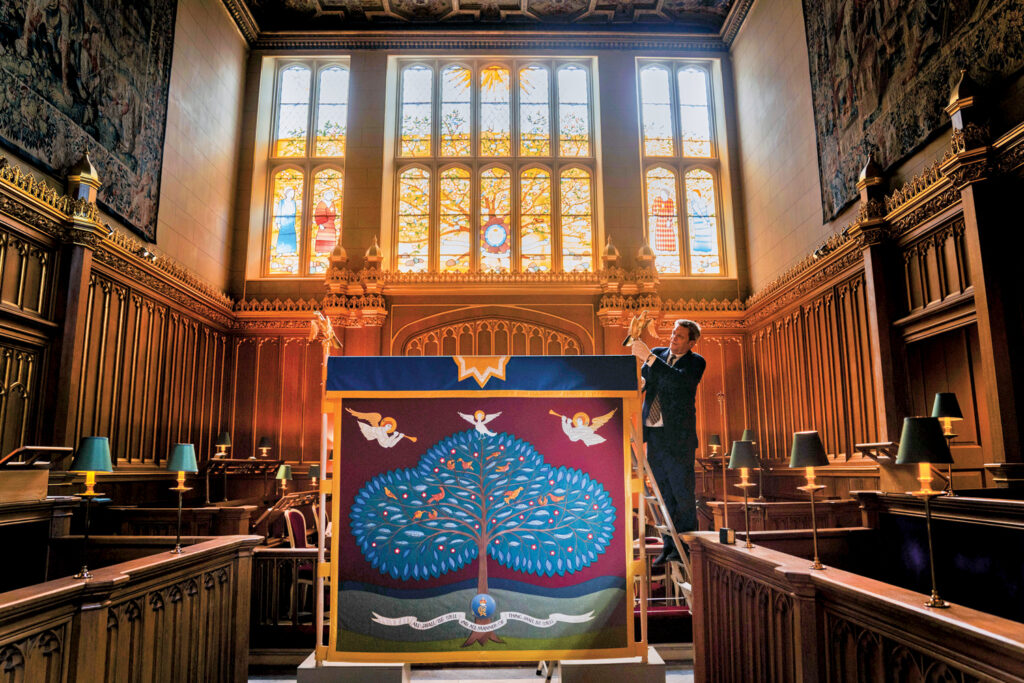
Amid all the pomp and circumstance at the coronation of King Charles III at Westminster Abbey in May was a nod to the textile arts and history of the industry in the north of England (and New Zealand sheep as well).
Elements of the applique work on the screen used during the king’s anointing, prior to his investiture and coronation, contained textile designer and manufacturer Camira’s premium felted fabrics, which are produced using New Zealand wool.
The tree on the screen included 56 leaves, representing the countries of the Commonwealth, and was made from the company’s Synergy fabric in a color called League. The company’s Blazer fabric in the color Ulster and Synergy in Accord depict the grass area at the base of the tree, where the king’s cypher is positioned to represent the sovereign as servant of the people.
Other English textile businesses that contributed to the creation of the anointing screen include AW Hainsworth, R.Gledhill Ltd., John Spencer Textiles Ltd., Ian Mankin Ltd., W.T. Johnson & Sons Ltd. and H & C Whitehead Ltd.
The king is an advocate of the preservation of heritage craft skills, and the anointing screen project was a collaboration of specialists in traditional crafts. It combines traditional and contemporary and sustainable embroidery practices.
King Charles also is a supporter of The Campaign for Wool, which launched in 2010 to raise awareness among consumers about the inherent natural, renewable and biodegradable benefits offered by the fiber in fashion, furnishings and everyday life.
Camira is a privately owned U.K. textile group founded in 1974 under the name Camborne Fabrics, but its heritage goes back to 1783 through various acquisitions. It employs more than 750 people, and the business produces roughly 8 million meters (26.25 million feet) of fabric per year. It has been producing recycled fabrics for more than 20 years as well as innovating a new category of fabrics made from natural wool and bast fibers, such as nettle, hemp and flax.
 TEXTILES.ORG
TEXTILES.ORG


